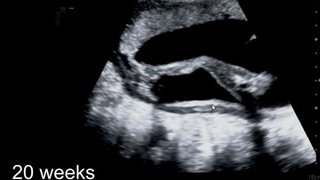Why you should ask about your hospital’s C-section rate
March 22, 2022

More than ever, the health information you seek is at your fingertips – including information about cesarean (C-section) delivery rates.
It’s important to understand that most standard rating systems don’t consider the volume of high-risk deliveries a doctor or hospital performs – high-risk deliveries are more likely to require C-section. Most C-section rates you see online are based on data from patients who are at low risk of needing the procedure. This includes patients who are:
- Delivering for the first time
- Considered low risk for complications
- Having just one baby (singleton birth)
- Carrying a baby that is head-down (not breech) when labor begins
Among low-risk patients, approximately 1 in 4 will need a C-section. For patients with known risk factors – such as previous C-section, fetal growth restriction, or maternal heart complications – the risk increases. And in many cases, these situations increase a center’s C-section ratings.
There absolutely are cases in which a C-section is necessary for the health of the patient and/or baby. For example, my twin daughters were delivered by C-section because they were both in a breech position.
But rates of unnecessary C-sections have risen internationally over the years due to patients asking for elective C-sections; doctors providing the procedures out of personal convenience; and advancements in technology and testing that tend to reveal more potential complications.
There is consensus among medical experts that too many C-sections are performed. However, focusing just on the numbers doesn’t tell the full story and can put patients in harm’s way.
So, when you are choosing an Ob/Gyn and a hospital at which to deliver, look at their C-section rates through the lens of what those numbers mean for YOU and your pregnancy.
Understanding published C-section rates
Many organizations base C-section rates on their NTSV numbers. NTSV stands for “nulliparous, term, singleton, and vertex.” That means “first-time delivering mothers at full-term who are having singleton, head-down babies.” In other words, the NTSV number tells how many C-sections a center performs in low-risk pregnancy patients.
However, the Society for Maternal-Fetal Medicine (SMFM) has flagged an important point: Some first-time delivering patients have significant maternal or fetal complications, such as heart or kidney problems. Using NTSV rates, patients in this group who needed C-sections would increase the center’s C-section rate – even when C-section is medically necessary.
There may be reasons why some doctors or hospitals have higher C-section rates. For example, some centers are better equipped to manage high-risk deliveries. It makes sense that centers that see more high-risk deliveries will have a higher rate for cesarean delivery.
A high C-section rate may deter patients with complex pregnancies from choosing that hospital if they don’t understand how the rates are calculated. The same goes for patients who are considered low risk but might end up needing the procedure.
In some centers, providers are pressured to reduce C-section rates and may hesitate to offer the procedure to patients who need it. For this reason, England’s National Health Service (NHS) announced in February 2022 that maternity services will “stop using total caesarean section rates as a means of performance management.”
While it can be informative to know your chosen hospital’s C-section trends and rates, it is more important to consider what those numbers mean for your personal situation.
What the numbers mean for your health
If you have a complication that may result in cesarean delivery, going to a hospital with a higher C-section rate – and a team prepared to manage high-risk deliveries – may be the best choice. Conditions that can increase your risk of C-section include:
- Heart problems
- Kidney problems
- Fetal breech positioning
- Fetal growth restriction
- Maternal age 35 or older
- Obesity
- Preeclampsia
- Pregnancy with twins or more
- Uncontrolled diabetes
Talk with your provider about whether your pregnancy and delivery are considered low- or high-risk and discuss how the hospital’s C-section rates might affect your situation. Preparing for a possible C-section ahead of time can help ease the stress if that moment arises during labor and delivery.
Even in low-risk pregnancies, approximately 25% of patients require a C-section. Here are three reasons why it’s important for all patients to understand their hospital’s C-section rates and personal risk factors:
- C-section is major surgery. Complications can include infection, increased bleeding, injuries to the bowel and bladder, and reaction to anesthesia. The recovery time for a C-section is also much longer than for a vaginal delivery.
- Having a C-section increases the chance of needing one in a later pregnancy. And the risks go up with each C-section. The placenta can end up abnormally low in the uterus (known as placenta previa), or it can grow into the scar from the previous C-section, which can lead to a higher chance of bleeding during pregnancy or delivery – or even needing a hysterectomy.
- C-sections cost nearly twice as much as vaginal deliveries. Even if you have good insurance, you likely will pay some co-insurance for a hospital stay. This can run into the thousands depending on the out-of-pocket maximum set by your plan. Insurance plans also are paying attention to the rising number of non-medically indicated C-sections and some may exclude hospitals with high C-section rates.
Reducing medically unnecessary C-sections
Cesarean sections are the most common surgical procedures performed in the U.S. In 2020, nearly 32% of U.S. deliveries were by C-section. Rates can vary widely from state to state, and even from hospital to hospital within the same city. Though C-sections are generally considered safe, they are still major surgeries that carry risks and should only be performed when warranted.
The C-section rate in Texas for singleton births was 28.2% in 2019. According to The Joint Commission’s Quality Check reporting, UT Southwestern Medical Center’s C-section rate for low-risk patients – first delivery, one baby at term, head down – was 25% to 27%.
The Department of Health and Human Services’ (HHS) Healthy People 2030 initiative has set a target C-section rate of 23.6% for low-risk deliveries. While we are hovering around the HHS target rate, we still have work to do.
In 2019, the American Congress of Obstetricians and Gynecologists (ACOG) and the Society for Maternal-Fetal Medicine (SMFM) reaffirmed their 2014 guidelines to help prevent unnecessary C-sections. A big part of this effort is allowing women with low-risk pregnancies to spend more time in the first stage of labor. The groups also encourage the use of operative vaginal delivery techniques, such as the use of forceps.
Along with following these guidelines, our clinic in Dallas is making a few additional efforts to reduce the number of C-sections we perform. First, we’re making sure our physicians know their C-section rate for low-risk patients. Some doctors just aren’t aware of how they compare to their colleagues and the national average.
UTSW’s William P. Clements Jr. University Hospital also launched a Certified Nurse Midwife program in 2015. We utilize a laborist model of on-call coverage – meaning there is always one member of the faculty in labor and delivery available to care for patients. Studies have shown that hospitals that employ midwives and utilize this type of call coverage report fewer C-sections than those that don’t.
4 ways to help reduce your C-section risk
While hospitals and maternal-fetal health organizations work to reduce medically unnecessary C-sections, there are steps you can take as well.
- Ask about the C-section rate for your hospital and obstetrician, especially for low-risk patients. If you can’t find the information online and they won’t tell you, consider finding a new provider and hospital.
- Ask if your hospital employs midwives. You also may want to consider using a doula to provide additional physical and emotional support during delivery. Studies have shown that women who have extra support during labor are slightly less likely to have a C-section.
- Maintain a healthy lifestyle. Follow your Ob/Gyn’s recommendations for how much weight you should gain and exercise regularly. Also, be patient. You may be tempted to ask your doctor to induce labor if you go past your due date, but your body will let you know when it’s time to have your baby.
- Understand your insurance plan. If you do need a C-section, you’ll want to be prepared for what it might cost.
Reducing the number of medically unnecessary C-sections will require hard work, and it won’t happen overnight. But understanding what C-section rates mean for your personal situation – and asking questions – will help us provide you with the safest, healthiest birth experience.
To talk with a doctor about whether you might need a C-section, call 214-645-8300 or request an appointment online.










